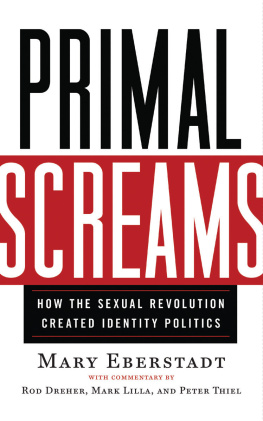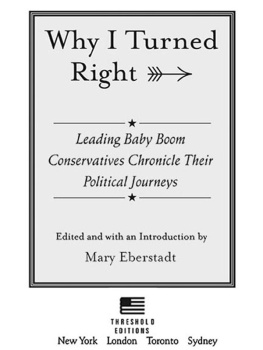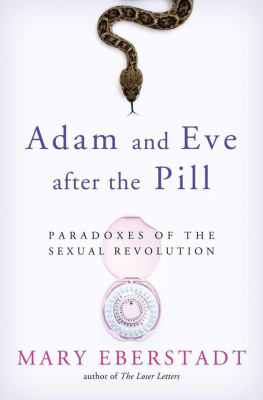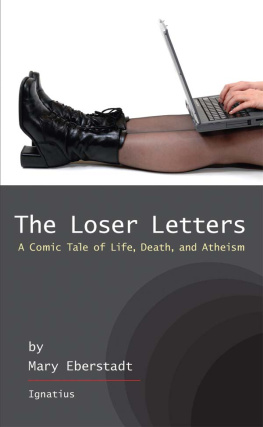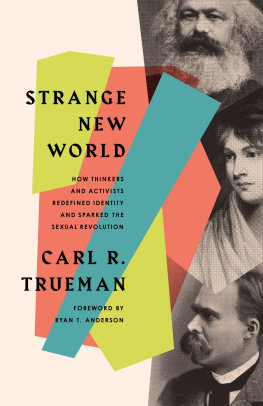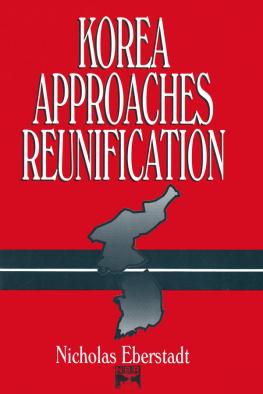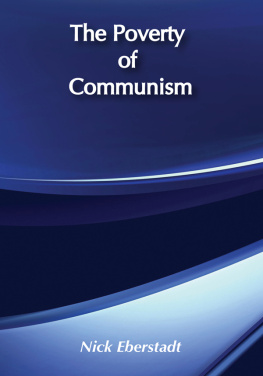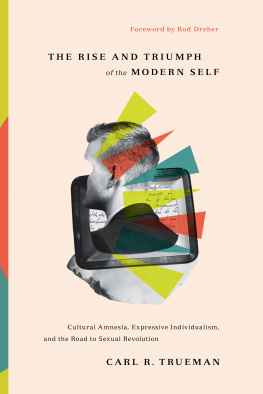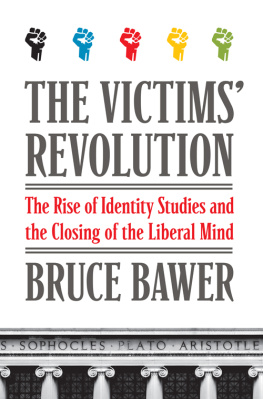Mary Eberstadt - Primal Screams: How the Sexual Revolution Created Identity Politics
Here you can read online Mary Eberstadt - Primal Screams: How the Sexual Revolution Created Identity Politics full text of the book (entire story) in english for free. Download pdf and epub, get meaning, cover and reviews about this ebook. year: 2019, publisher: Templeton Press, genre: Politics. Description of the work, (preface) as well as reviews are available. Best literature library LitArk.com created for fans of good reading and offers a wide selection of genres:
Romance novel
Science fiction
Adventure
Detective
Science
History
Home and family
Prose
Art
Politics
Computer
Non-fiction
Religion
Business
Children
Humor
Choose a favorite category and find really read worthwhile books. Enjoy immersion in the world of imagination, feel the emotions of the characters or learn something new for yourself, make an fascinating discovery.
- Book:Primal Screams: How the Sexual Revolution Created Identity Politics
- Author:
- Publisher:Templeton Press
- Genre:
- Year:2019
- Rating:5 / 5
- Favourites:Add to favourites
- Your mark:
- 100
- 1
- 2
- 3
- 4
- 5
Primal Screams: How the Sexual Revolution Created Identity Politics: summary, description and annotation
We offer to read an annotation, description, summary or preface (depends on what the author of the book "Primal Screams: How the Sexual Revolution Created Identity Politics" wrote himself). If you haven't found the necessary information about the book — write in the comments, we will try to find it.
Primal Screams: How the Sexual Revolution Created Identity Politics — read online for free the complete book (whole text) full work
Below is the text of the book, divided by pages. System saving the place of the last page read, allows you to conveniently read the book "Primal Screams: How the Sexual Revolution Created Identity Politics" online for free, without having to search again every time where you left off. Put a bookmark, and you can go to the page where you finished reading at any time.
Font size:
Interval:
Bookmark:

Advance Praise for Primal Screams
A well-researched, powerfully argued, and profound account of the deepest sources of our current cultural crises. Wise and courageous, Mary Eberstadt has written an indispensable book for understanding our time.
Leon R. Kass, professor emeritus, Committee on Social Thought, The University of Chicago
Primal Screams is a deeply thought-provoking reflection on human nature and the fate of our republic.
Mary Ann Glendon, Learned Hand Professor of Law, Harvard University
Some basic questions of identity have overtaken Western politics in the twenty-first century, and before they can be addressed, they must be understood. With her characteristic clarity and breadth of learning, Mary Eberstadt offers a powerfully persuasive guide to why we are beset by these challenges, and how to take them on.
Yuval Levin, editor of National Affairs
Mary Eberstadt proves, yet again, that she is one of Americas most insightfulas well as compassionatesocial analysts.
George Weigel, Distinguished Senior Fellow and William E. Simon Chair in Catholic Studies, Ethics and Public Policy Center
Mary Eberstadt understands identity politics better than its practitionersand any of its critics to date. She takes seriously the question of why so many people feel a need for the sense of belonging that identity politics seeks to provide. Her answer is terrifyinga loss that human beings of modern times have suffered, but of which we have been almost entirely unaware. Until now.
Tod Lindberg, author of The Heroic Heart: Greatness Ancient and Modern
It is scarcely a foregone conclusion that our society will return to sanity on questions of sexual morality and marriage. But if we do, then prophets like Mary Eberstadt will be celebrated in song and story.
Robert P. George, McCormick Professor of Jurisprudence, Princeton University
In Primal Screams, Mary Eberstadt responds to the deepest cries of the wounded souls of our time. Read it and share it.
Kathryn Jean Lopez, National Review Institute
PRIMAL SCREAMS
HOW THE SEXUAL REVOLUTION CREATED IDENTITY POLITICS
Mary Eberstadt

Templeton Press
300 Conshohocken State Road, Suite 500
West Conshohocken, PA 19428
www.templetonpress.org
2019 by Mary Eberstadt
All rights reserved. This book may not be reproduced, in whole or in part, including illustrations, in any form (beyond that copying permitted by Sections 107 and 108 of the U.S. Copyright Law and except by reviewers for the public press), without written permission from the publishers.
Set in Janson Text by Pro Production Graphic Services
Library of Congress Control Number: 2019943501
ISBN: 978-1-59947-411-3 (cloth: alk. paper)
ISBN: 978-1-59947-578-3 (eBook)
This paper meets the requirements of ANSI/NISO Z39.48-1992 (Permanence of Paper).
A catalogue record for this book is available from the Library of Congress.
19 20 21 22 23 10 9 8 7 6 5 4 3 2 1
Printed in the United States of America.
For Nick
If a man has lost a leg or an eye, he knows he has lost a leg or an eye; but if he has lost a selfhimselfhe cannot know it, because he is no longer there to know it.
Oliver Sacks, The Man Who Mistook His Wife for a Hat and Other Clinical Tales
Contents
_________________________
Introduction
THE MYTH OF THE LONE WOLF
O nce upon a time, a great many people held two common beliefs that science has now overruled.
One was that Canis lupus, Latin for wolf, commonly exists in isolation from other wolvesan assumption whose pedigree extends back centuries.
Wolves are, in fact, intensely familial animals. Temple Grandin, an autistic savant and a professor and preeminent authority on animal behavior, summarizes the scientific turnaround with co-author Catherine Johnson as follows:
Mechs findings turn practically everything we think we know about wolves upside down.... Wolves live the way
Such work documenting the mom-and-pop foundations of lupine life is one example of the ways in which new technologies and research are revealing just how socialin particular, how familialanimal life is. Ozzie and Harriet, a monogamous pair with offspring attached, is not always the norm. Surprisingly often, though, whether they mate for life or not, animals are now known to exist in kinship structures similar to those governing human beings from time immemorial, replete with mothers and fathers, siblings, extended family, and sometimes other female relatives, childless or otherwise, who help to raise the young.
New investigations into the social lives of animals also reveal this corollary: though many human beings might play today by the rules of the TV comedy Modern Family, according to which a family is whatever its self-appointed members say it is, other animals do not. Thus, by way of a few examples, what goes for wolves goes also for coyotes and many other mammals: they live in nuclear or extended biological families. And so on.
Of course there are deep reasons why animals have evolved to behave in such familial ways. In the matter of their need to know their own relatives from others, elemental forces are in play. One is the exigency to avoid inbreeding, which is inimical Another is that there is strength in numbers and cooperation for both predator and prey. In sum:
Most complex animal societies are actually families in which group members are related and therefore share a high proportion of their genes. The cooperative and often complex collective action that arises from such family groups is a product of the interaction of individuals seeking to maximize their own evolutionary fitness.
Other recent groundbreaking research has revealed that animals are social learners on a scale hitherto unknown.
Not surprisingly, our improved understanding of the social sophistication of fellow creatures is reverberating beyond animal science. New insight into the extraordinary characteristics of elephants is one reason why theyre no longer found in circuses.in the past, thanks in large part to advancing empirical understandings of their complicated communal lives.
Why did anyone believe in the myth of the lone wolf in the first place? Temple Grandin and Catherine Johnson theorize that people missed the truth initially because most research on wolves was done on animals in captivity. Animals in captivitytypically separated from their families and surrounded by nonrelated animals in an unnatural settingexhibit behaviors markedly dissimilar from those left in nature. These effects range from heightened anxieties and aggression to the development of stereotypies, or compulsive repetitive tics, and other self-destructive habits that do not arise in the animals native ecosystem.
Of course the invocation of research into animal behavior for a book about identity and human beings is intrinsically limited. Thus, nothing in the pages ahead depends on the latest empirical leaps into understanding our fellow life-forms, though examples irresistible for purposes of illustration will appear here and there. All the same, and at no risk of anthropomorphizing the animals or zoo-morphizing the people, we might meditate for starters on the irony that science now puts before us.
The more human beings learn about the fantastically intricate social workings of nonhuman beings, the more some want to spare those fellow creatures suffering. This includes the pain of familial and habitat separation, and the dysfunctions associated
Next pageFont size:
Interval:
Bookmark:
Similar books «Primal Screams: How the Sexual Revolution Created Identity Politics»
Look at similar books to Primal Screams: How the Sexual Revolution Created Identity Politics. We have selected literature similar in name and meaning in the hope of providing readers with more options to find new, interesting, not yet read works.
Discussion, reviews of the book Primal Screams: How the Sexual Revolution Created Identity Politics and just readers' own opinions. Leave your comments, write what you think about the work, its meaning or the main characters. Specify what exactly you liked and what you didn't like, and why you think so.

